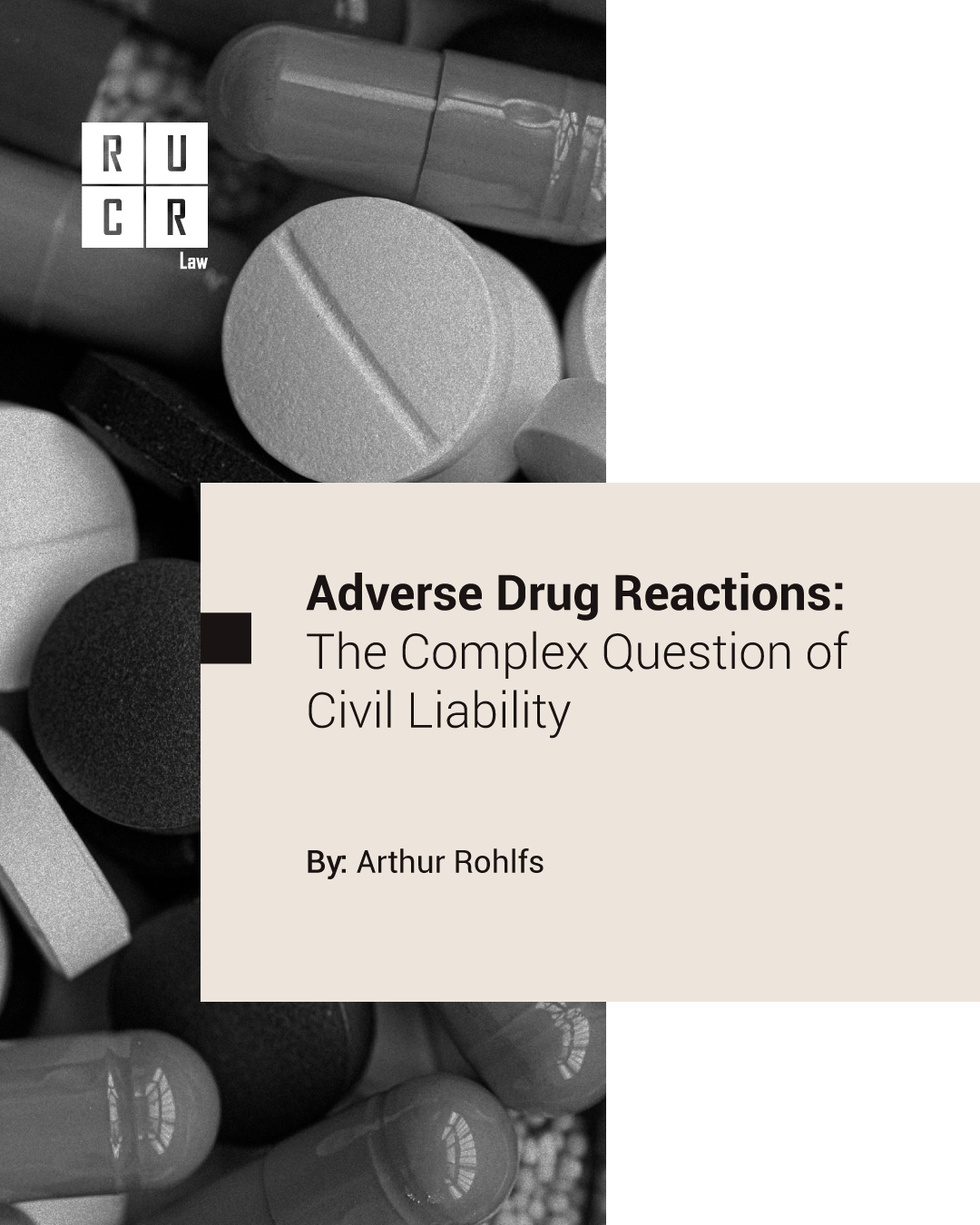
ARE PHARMACEUTICAL COMPANIES LIABLE FOR DAMAGES TO CONSUMERS CAUSED BY ADVERSE DRUG EFFECTS?
Civil liability of pharmaceutical companies for drug side effects is a highly controversial topic that often leads to debate in the Courts.
Analysing three precedents from the STJ (Superior Court of Justice) on the topic over the past seven years (REsp 1.599.405/SP, REsp 1.402.929/DF, and REsp 1.599.405/SP), a relatively safe pattern can be discerned regarding how the issue is perceived by our Higher Courts.
It appears that, as a rule, if the side effects are normal to the nature of the medicine and predictable to the consumer, the pharmaceutical company would be exempt from civil liability. Otherwise, there would be such liability.
According to the STJ, predictability would generally be assumed when there is sufficient information about this risk, which in practice occurs with its inclusion in the leaflet. In other words, it is understood that if it is listed in the leaflet, the pharmaceutical company could not be held liable because the consumer could foresee its occurrence.
However, this is one of the most relevant aspects for the Court: if it is not listed in the leaflet (because it was discovered later, for example), the pharmaceutical company must necessarily fulfil its duty to inform the consumer in other equally effective ways (warning to authorities, widespread advertisements, etc.). If it does not do this, the company would be civilly liable for consumer damages, because it is understood that the consumer’s right to choose was violated by not knowing about the risks. And this even if there could be a delay in the administrative request to update the leaflet with ANVISA.
On the other hand, even if it was not possible to foresee the occurrence of that side effect at the time the medicine was marketed (even due to scientific limitations), the pharmaceutical company would still be responsible if the consumer was not informed about the risk. This is a controversial point and still prompts several discussions, but it was the understanding adopted in a ruling by the 3rd Panel of the STJ (REsp 1.599.405/SP).
In any case, there is an important caveat: listing the side effect in the leaflet is not enough to it become predictable, as is often generalized. It is required that the adverse effect be considered normal, that is, it is not specific to a particular medicine, and that it does not raise doubts whether the product is defective in its formulation. In other words, a side effect is normal when it is equally seen in medicines of the same kind and when there is no concrete measure that can be taken by the pharmaceutical company to prevent or stop its occurrence.
Therefore, it is extremely important that pharmaceutical companies rigorously follow the drug development process. After all, it is during the clinical trial phases that these possible side effects can be investigated to enable not only the correction of the problem – when this is possible – but also, when it is not possible, to facilitate its prediction in the leaflet, so that the company can be safeguarded itself from potential liability.
Nevertheless, as there are positions that allow exceptions or even changes over the years, it is always important to have a qualified legal team to know how the Courts are addressing the matter. Only by having access to concrete, specific and current guidance can the risks involved in drug development be mitigated.
Latest Posts
The Strategic Relevance and Distinctive Nature of Labor Due Diligence in M&A Transactions
Labor Due Diligence constitutes a critical stage within the broader scope of legal and compliance assessments conducted in corporate Mergers and...
Built to Suit (BTS) Contract
The Built to Suit (BTS) contract is a commercial legal model in which the lessor commits to customizing a property — either by constructing it from scratch...
